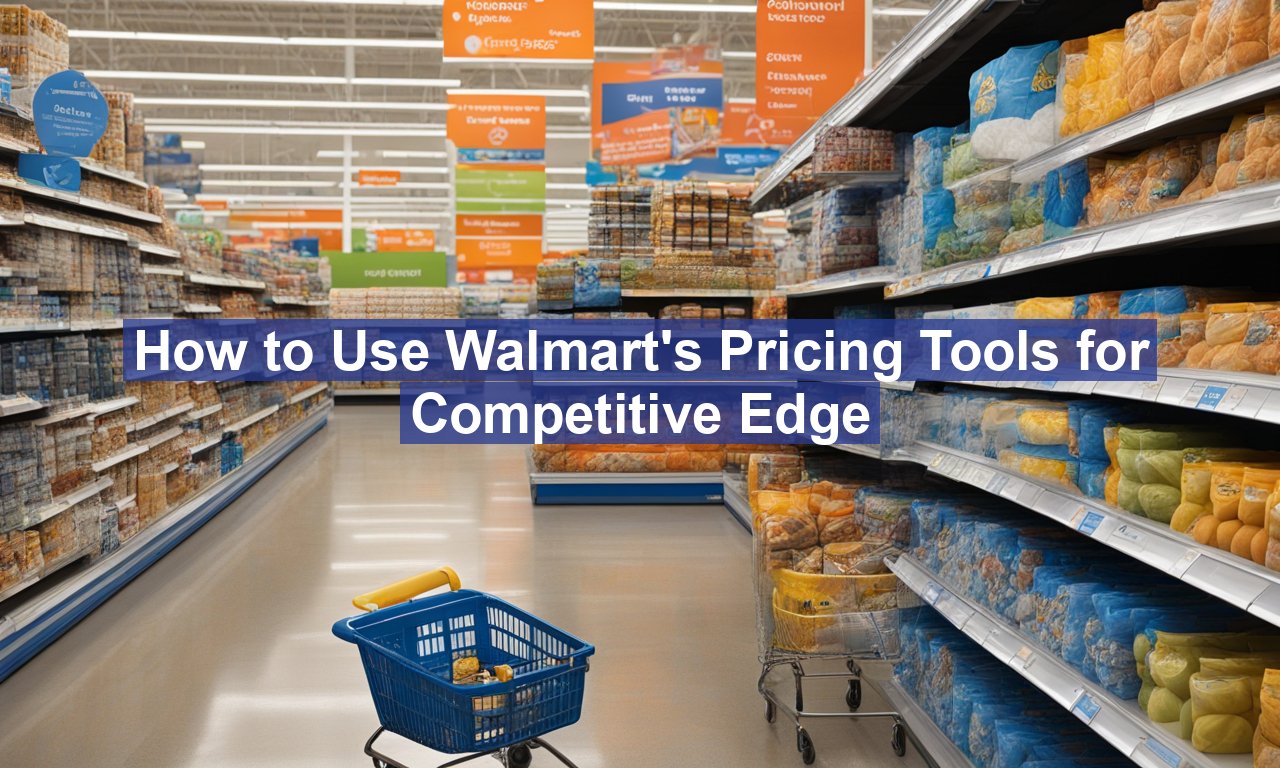Imagine stepping into a bustling marketplace where the prices are always right, attracting customers and leaving competitors wondering what your secret sauce is. Welcome to the world of Walmart’s pricing tools, designed to give you a competitive edge in today’s fast-paced retail landscape. In this article, we’ll unravel the mystery behind these advanced strategies and tools, teaching you how to leverage them to enhance your business. Whether you’re a small business owner, an e-commerce enthusiast, or simply curious about retail dynamics, understanding Walmart’s approach can be a transformative asset.
Why Pricing Matters in Retail
In retail, pricing is more than just numbers; it’s an art and science blended together. Effective pricing strategies can significantly increase foot traffic, enhance customer loyalty, and maximize profit margins. On the contrary, poor pricing can lead to loss of customers and, eventually, revenue. With the right pricing tools, retailers can maintain a balance between competitiveness and profitability.
Understanding Walmart’s Pricing Philosophy
Walmart’s pricing strategy is centered around offering customers “everyday low prices” (EDLP). This approach ensures that prices remain consistently low rather than fluctuating with promotions and discounts. By doing so, Walmart builds trust with its customers, strengthening brand loyalty. This philosophy is grounded in comprehensive market analysis, cost-effective supply chain management, and a relentless focus on cost-cutting.
To further understand Walmart’s pricing model, consider this detailed exploration of their business model.
Leveraging Walmart’s Pricing Tools
Walmart uses advanced pricing tools to shape its pricing strategy effectively. If adopted by your business, these tools can give you a considerable competitive edge. Here’s how:
1. **Price Scraping Tools**
Price scraping tools are essential in understanding competitors’ pricing strategies. Walmart uses these tools to track competitors’ prices in real-time, allowing them to remain agile and responsive. Using similar technology can help your business ensure your prices are competitive without compromising margins.
– Real-Time Data: These tools provide instantaneous updates on competitors’ pricing, ensuring you’re always a step ahead.
– Trend Analysis: Analyze trends over time to predict future pricing movements and strategize accordingly.
2. **Price Optimization Software**
Price optimization software helps Walmart determine the most effective pricing that maximizes profit while remaining competitive. These tools use algorithms and machine learning to analyze sales data, consumer behavior, and market trends.
– Algorithm-Based Decisions: Use algorithms to test and find optimal pricing points.
– Dynamic Pricing: Implement dynamic pricing strategies that adapt to market demands and customer behavior.
For further insights into price optimization, consider reviewing this case study on AI in pricing.
3. **Integrated Marketing Strategies**
Integrating marketing with pricing can significantly boost your competitive edge. Walmart’s pricing strategies are often aligned with its marketing efforts, creating synergy that enhances customer perception and sales.
– Consistent Messaging: Ensure your marketing narrative supports your pricing strategy, reinforcing customer trust.
– Promotional Pricing: Use strategic discounts and promotions to enhance value perception without eroding overall pricing objectives.
Implementing Walmart’s Strategies in Your Business
Step 1: Conduct Comprehensive Market Research
Start by gathering data on your competitors and consumer preferences. Utilize price scraping tools to monitor the competitive landscape continuously. Understanding where you stand relative to others is crucial in formulating an effective strategy.
Step 2: Adopt Technology for Pricing
Invest in technology that aids in price optimization and dynamic pricing. Remember, these tools are not just for large corporations; many software providers cater to businesses of all sizes. Leveraging these can automate decisions, leaving you more time to focus on strategic growth.
Step 3: Align Pricing with Business Goals
Ensure your pricing aligns with broader business objectives. For instance, if the goal is to increase market share, you might choose a more competitive pricing strategy, even at the expense of short-term profits.
Step 4: Monitor and Revise
Retail dynamics change rapidly, and so should your pricing strategies. Keep analyzing data, testing new strategies, and adjusting your pricing to ensure sustained competitive advantage.
Conclusion: Gaining a Competitive Edge
Understanding and adopting Walmart’s pricing tools can transform your retail approach, offering significant competitive advantages. By focusing on real-time market data, employing advanced optimization tools, and ensuring seamless integration with your marketing strategies, you can drive both customer satisfaction and business growth.
Retail success isn’t just about selling products; it’s about doing so with the right pricing. With Walmart’s pricing tools as your guide, your business can not only survive but thrive in today’s challenging retail environment. For additional insights, read more about customer loyalty strategies from Harvard Business Review. Happy strategizing!


